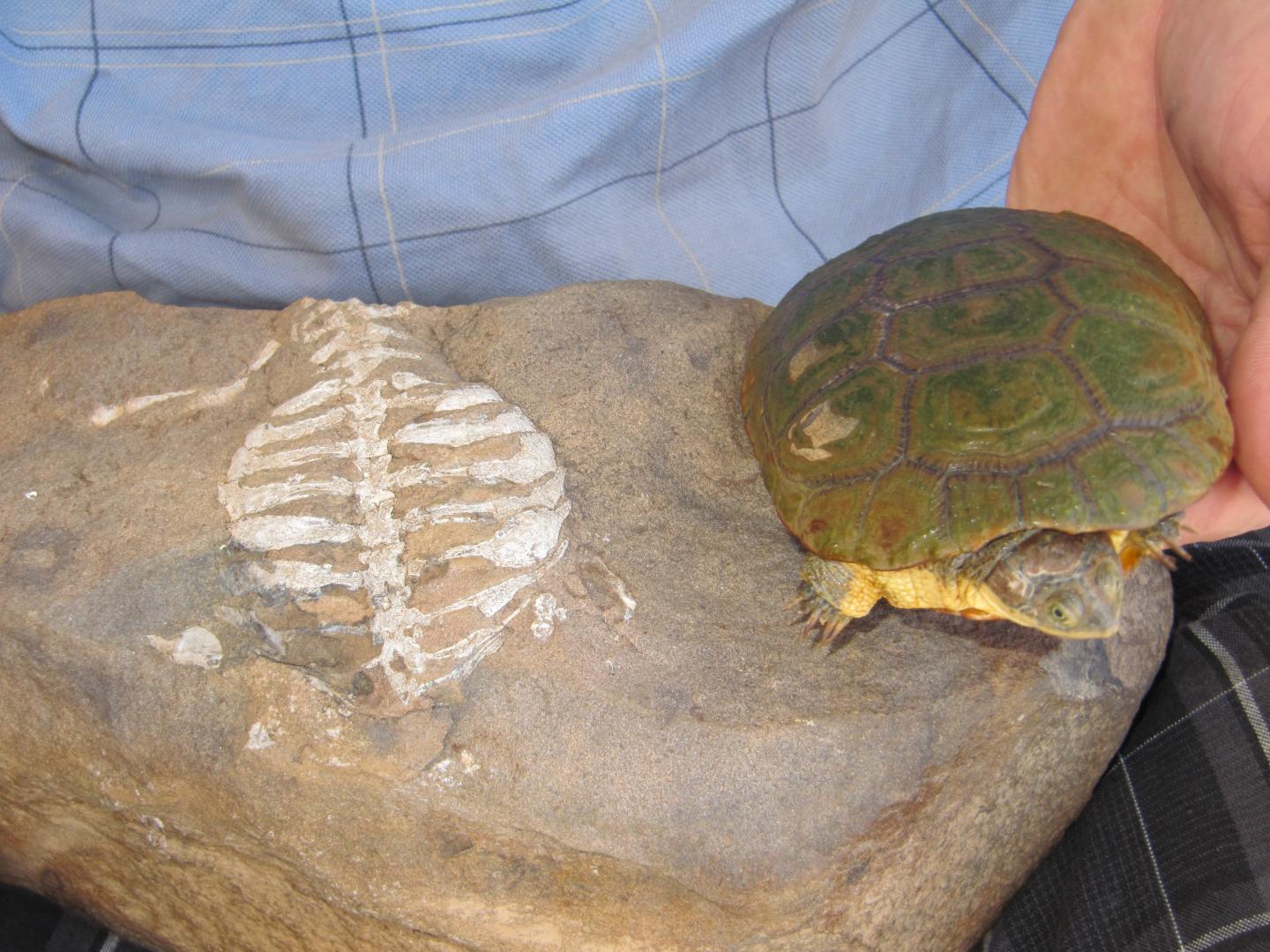Through the careful study of modern and early fossil tortoise, researchers now have a better understanding of how tortoises breathe and the evolutionary processes that helped shape their unique breathing apparatus and tortoise shell. The findings published in a paper, titled: Origin of the unique ventilatory apparatus of turtles, in the scientific journal, Nature Communications, on Friday, 7 November 2014, help determine when and how the unique breathing apparatus of tortoises evolved.
Lead author Dr Tyler Lyson of Wits University's Evolutionary Studies Institute, the Smithsonian Institution and the Denver Museum of Nature and Science said: "Tortoises have a bizarre body plan and one of the more puzzling aspects to this body plan is the fact that tortoises have locked their ribs up into the iconic tortoise shell. No other animal does this and the likely reason is that ribs play such an important role in breathing in most animals including mammals, birds, crocodilians, and lizards."
Instead tortoises have developed a unique abdominal muscular sling that wraps around their lungs and organs to help them breathe. When and how this mechanism evolved has been unknown.
"It seemed pretty clear that the tortoise shell and breathing mechanism evolved in tandem, but which happened first? It's a bit of the chicken or the egg causality dilemma," Lyson said. By studying the anatomy and thin sections (also known as histology), Lyson and his colleagues have shown that the modern tortoise breathing apparatus was already in place in the earliest fossil tortoise, an animal known as Eunotosaurus africanus.

A Computed Tomography rendering of a snapping turtle (Chelydra serpentina) showing the skeleton (white), lungs (blue), and abdominal muscles (red and pink) used to ventilate the lungs. Because turtles have locked their ribs up into the iconic turtle shell, they can no longer use their ribs to breathe as in most other animals and instead have developed a unique abdominal muscle based system.
(Photo Credit: Emma R. Schachner)
This animal lived in South Africa 260 million years ago and shares many unique features with modern day tortoises, but lacked a shell. A recognisable tortoise shell does not appear for another 50 million years.
Lyson said Eunotosaurus bridges the morphological gap between the early reptile body plan and the highly modified body plan of living tortoises, making it the Archaeopteryx of turtles.
"Named in 1892, Eunotosaurus is one of the earliest tortoise ancestors and is known from early rocks near Beaufort West," said Professor Bruce Rubidge, Director of the Evolutionary Studies Institute at Wits University and co-author of the paper.
"There are some 50 specimen of Eunotosaurus. The rocks of the Karoo are remarkable in the diversity of fossils of early tortoises they have produced. The fact that we find Eunotosaurus at the base of the Karoo succession strongly suggest that there are more ancestral forms of tortoises still to be discovered in the Karoo," Rubidge added.
The study suggests that early in the evolution of the tortoise body plan a gradual increase in body wall rigidity produced a division of function between the ribs and abdominal respiratory muscles. As the ribs broadened and stiffened the torso, they became less effective for breathing which caused the abdominal muscles to become specialised for breathing, which in turn freed up the ribs to eventually - approximately 50 million years later - to become fully integrated into the characteristic tortoise shell.

Early in the evolution of the turtle body plan a gradual increase in body wall rigidity produced a division of function where the abdominal muscles became specialized for breathing, which freed up the ribs to eventually (approximately 50 million years later) become fully integrated into the characteristic turtle shell.
(Photo Credit: : Blair Lyons (Stroma Studios) and Emma R. Schachner)
Lyson and his colleagues now plan to investigate reasons why the ribs of early tortoises starting to broaden in the first place. "Broadened ribs are the first step in the general increase in body wall rigidity of early basal tortoises, which ultimately leads to both the evolution of the tortoise shell and this unique way of breathing. We plan to study this key aspect to get a better understanding why the ribs started to broaden."

A new study shows that while the early (260 myr) proto turtle, Eunotosaurus africanus from South Africa, only had the beginnings of a turtle shell, it already had the highly modified abdominal muscular sling that is used to breathe in modern turtles, including Pelusios niger on the right.
(Photo Credit: Luke Norton)
Source: University of the Witwatersrand